export processing zone
description: area where goods may be landed, stored, handled, manufactured, reconfigured, or re-exported under specific customs regulation and generally not subject to customs duty
48 results

We Are All Fast-Food Workers Now: The Global Uprising Against Poverty Wages
by
Annelise Orleck
Published 27 Feb 2018
,” May 5, 2015, Special Economic Zones (blog), World Bank, http://blogs.worldbank.org/category/tags/special-economic-zones; Matt Kennard and Claire Provost, “Inside the Corporate Utopias Where Capitalism Rules and Labor Laws Don’t Apply,” In These Times, July 25, 2016. 7. “Export Processing Zones Growing Steadily,” International Labour Organization, September 28, 1998; Bangladesh Export Processing Zones Authority, “About BEPZA,” http://www.epzbangladesh.org.bd; Aycil Yucer and Jean-Marc Siroen, “Trade Performance of Export Processing Zones,” World Economy 39, no. 7 (April 2016). 8. H&M Annual Report, 2016, https://about.hm.com/content/dam/hmgroup/groupsite/documents/masterlanguage/Annual%20Report/Annual%20Report%202016.pdf. 9.
…
They turned to the International Monetary Fund and the World Bank, which responded in the same way they had in scores of the world’s poor countries during the 1980s and 1990s. They provided debt relief—but at a price. The Philippines would have to cut spending on public services and allow foreign corporations to purchase Philippine debt, land, and water rights. And a string of export-processing zones would be established—in Papanga, Batangas, Laguna, Cebu, and Cavite.4 Perhaps the most infamous was the Bataan Export Processing Zone (BEPZ) in Mariveles, on the tip of the Bataan Peninsula across the bay from Manila. It was there during World War II that American and Filipino soldiers began their infamous “death march.” A small fishing community remained there into the 1970s, trolling the rich waters of Manila Bay in dugout canoes.
…
One hundred years after the Industrial Workers of the World called for “one big union,” SENTRO has revived the notion. Sion Binos’s faith in the potential of global organizing grew ever more intense as more and more garment industry jobs were moved to export-processing zones. After 2005, she says, almost “all the garment shops in Metro Manila were transferred to Cavite, where the big export-processing zone had opened. My only choice was to organize inside the zone,” a labor environment ruled not by Philippine law but by global trade policies—and brutal force. It’s nearly impossible to make a decent living sewing clothes in Cavite, says Binos.
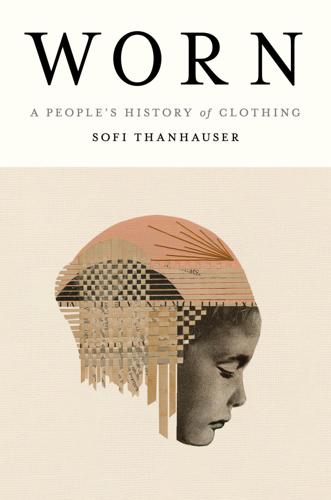
Worn: A People's History of Clothing
by
Sofi Thanhauser
Published 25 Jan 2022
“Here there is more ‘freedom,’ ” he added, with air quotes. Allan had spent most of his adult life working as a production manager for companies like Gildan and Hanes, making socks and underwear for American bargain shoppers. All of this garment manufacture now takes place behind the gates of Honduras’s export processing zones, known locally as “ZIPS.” When export processing zones proliferated in the 1980s and 1990s, boosters of these zones claimed that the employment opportunities inside them would lift up local economies. If anything could refute that argument, it was Allan’s story. After all, he wasn’t just a low-paid garment worker: he was management.
…
Classification: LCC GT511 .T53 2022 (print) | LCC GT511 (ebook) | DDC 391.009—dc23 LC record available at lccn.loc.gov/2021014453 LC ebook record available at lccn.loc.gov/2021014454 Ebook ISBN 9781524748401 www.pantheonbooks.com Cover art by Hollie Chastain Cover design by Janet Hansen ep_prh_6.0_138967718_c0_r0 For my father, SRJ Thanhauser Contents Introduction LINEN 1. The Last Linen Shirt in New Hampshire 2. Underthings COTTON 3. Texas Fields 4. The Fabric Revolution 5. Drought SILK 6. Yangtze Silk 7. Costume Drama 8. The Rise of Mass Fashion SYNTHETICS 9. Rayon 10. Nylons 11. Export Processing Zones WOOL 12. Army of the Small 13. Woolfest 14. Weavers Conclusion Acknowledgments Notes Bibliography Index Introduction I like clothes. Not far from the house in which I grew up on the island of Martha’s Vineyard is a place that we locals call the Dumptique.
…
L. Bean. In these Asian cities, companies could contract more quickly with factories. Today, the internet has made these buying offices unnecessary. Designs can be produced in New York using software that makes it simple to send detailed manufacturing specifications across the ocean. Export processing zones, EPZs, like Bien Hoa, where Carol works, have proliferated in the past half century. These zones are legal entities apart: sovereign space allowing unlimited, duty-free imports of raw inputs and capital goods necessary to produce exports. They are advertised to manufacturers as offering “less governmental red tape” and “more flexibility with labor laws for the firms in the zone than in the domestic market.”
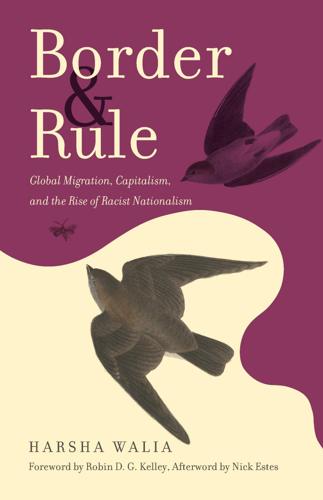
Border and Rule: Global Migration, Capitalism, and the Rise of Racist Nationalism
by
Harsha Walia
Published 9 Feb 2021
Eighty-five percent of the workers are women, who work under horrendous labor conditions, including working up to sixteen hours a day, sewing at a dizzying rate of hundreds of clothing pieces per worker, earning less than minimum wage, enduring routine intimidation and killing of union leaders, and working in shoddily maintained death traps lacking ventilation and exposed to open electrical wires.3 More than 500 garment workers died in factory fires in the country between 2006 and 2012, including the Tazreen Fashions factory fire that killed at least 112 workers.4 Many garment factories operate in Bangladesh’s export processing zones (EPZs), free trade zones specializing in manufactured goods for export with tax and rent incentives, suspension of national labor and environmental laws, and elimination of customs duties. In World Bank jargon, an EPZ “specializes in manufacturing for export to more advanced market economies by offering exporters duty-free imports, a favorable business environment, few regulatory restrictions, and a minimum of red tape.”5 EPZs are governed by the Bangladesh Export Processing Zone Authority, implementing its own laws geared toward investors.
…
US Wars Abroad, Wars at Home War on Drugs: Criminalization, Crackdowns, and Counterinsurgency Detention and Globalized Racial Violence Neoliberal Impoverishment, Border Militarization, and Carceral Governance Preemptive Wars of Terror Chapter 3. Dispossession, Deprivation, Displacement: Reframing the Global Migration Crisis Export Processing Zones as Extranational Zones Displacement by Starvation Wages and Rising Seas Global Dispossession through Land Grabs and Climate Change Part 2. “Illegals” and “Undesirables”: The Criminalization of Migration Chapter 4. Bordering Regimes Four Border Governance Strategies Externalization as Border Imperialism Chapter 5.
…
This synergy between the local and global is also evident in President Donald Trump’s proposal to classify all irregular, economic migrants as “enemy combatants” and incarcerate them at Guantánamo Bay.3 The pattern of constructing migrants as enemy aliens emerges worldwide, examined in chapter 3. Mainstream narratives of a “global migration crisis” depict migrants as threats without implicating the crises of forced dispossession, deprivation, and displacement. Capitalist dispossession and imperialist subordination manufacture bordered regimes of export processing zones in Bangladesh, land enclosures in Mozambique, and militarized settler occupation in Palestine. Border crises are, therefore, not merely domestic issues to be managed through policy reform. They must, instead, be placed within globalized asymmetries of power—inscribed by race, caste, class, gender, sexuality, ability, and nationality—creating migration and constricting mobility.
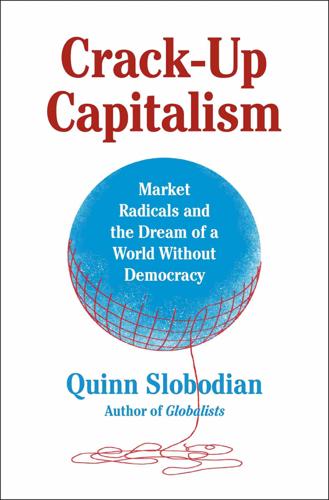
Crack-Up Capitalism: Market Radicals and the Dream of a World Without Democracy
by
Quinn Slobodian
Published 4 Apr 2023
The usual powers of taxation are often suspended within its borders, letting investors effectively dictate their own rules. The zones are quasi-extraterritorial, both of the host state and distinct from it. Zones come in a bewildering range of varieties—at least eighty-two, by one official reckoning.5 Among the more prominent are the special economic zone, the export-processing zone, and the foreign-trade zone. At one end of the socioeconomic spectrum, zones can be nodes in the networks of cross-border manufacturing.6 Often ringed by barbed wire, these are sites for low-wage production. At the other end, we can see a version of the zone in the tax havens where transnational corporations secrete away their earnings—what the economist Gabriel Zucman calls “the hidden wealth of nations.”7 The flight of corporate profits to these low- or zero-tax jurisdictions costs the United States alone $70 billion a year in tax revenue, while offshore tax shelters hold an estimated $8.7 trillion of the world’s wealth.8 Some Caribbean islands count more registered companies than residents.9 In his first run for office, candidate Barack Obama singled out Ugland House in the Cayman Islands, which contained twelve thousand corporations.
…
Among the more impressive buildings was the fifty-nine-story OCBC Tower designed by the ubiquitous I. M. Pei, a brutalist slab looming over low-rise red tile roofs, moored fishing barges, and the statue of Raffles—now updated and enlarged in synthetic marble. At independence, one of Singapore’s models was the US island possession of Puerto Rico, a pioneer in export processing zones, which experienced a flurry of industrial activity after the Second World War by attracting investors to simple factories funded by tax breaks and filled largely with women sewing underwear and other garments.36 By the 1980s, Singapore had moved up the value chain from textiles to high tech.
…
Following the Singapore model of Confucian capitalism finessed China’s abandonment of socialism, making it appear to be the realization of something autochthonous rather than an import from beyond. It also added a cultural gloss to the strategy of fragmentation through special economic zones. Rather than merely miniatures of the Hong Kong Crown Colony or copycat export processing zones, these were presented as part of the localism of traditional Chinese villages, and an inheritance of a decentralized form of imperial rule. Confucian capitalism opened the possibility of what was called “multiple modernities,” the idea that the world might not all be moving in the same direction toward a common goal—and that this might be for the best.62 In 1977, the international relations scholar Hedley Bull published a classic book called The Anarchical Society in which he called out the “tyranny of existing concepts.”63 The problem, he said, was that we had a narrow-minded idea of what states should look like.

Automation and the Future of Work
by
Aaron Benanav
Published 3 Nov 2020
The firms that did best in this context were the ones that responded by globalizing production. Facing competition on prices, US multinational corporations (MNCs) built international supply chains, shifting the more labor-intensive components of their production processes abroad and playing suppliers against one another to achieve the best prices.42 In the mid ’60s the first export-processing zones opened in Taiwan and South Korea. Even Silicon Valley, which formerly produced its computer chips locally in the San Jose area, shifted its production to low-wage areas, using lower grades of technology while benefiting from laxer laws around pollution and workers’ safety.43 MNCs in Germany and Japan adopted similar strategies, which were everywhere supported by new transportation and communication infrastructures.44 The globalization of production allowed the world’s wealthiest economies to retain manufacturing capacity, but it did not reverse the overall trend toward labor deindustrialization.
…
From the mid ’60s onward, as labor surpluses expanded globally, multinational firms began to engage in labor market arbitrage, playing suppliers off each other to obtain productive labor at low prices, which they then used to compete in oversupplied global markets. Industrial firms have taken advantage of employment insecurity not only in thousands of export-processing zones in low-income countries around the world, but also in the high-income countries, where they have moderated workers’ wage demands by creating multitiered contracts or hiring workers outside the bounds of standard labor law. Yet only about 17 percent of the global labor force works in manufacturing, with an additional 5 percent in mining, transportation, and utilities.33 The vast majority of the world’s underemployed workers therefore end up employed in the heterogeneous service sector, which accounts for between 70 and 80 percent of total employment in high-income countries, and the majority of workers in Iran, Nigeria, Turkey, the Philippines, Mexico, Brazil, and South Africa.34 The postindustrial economy we have inherited, finally on a world scale, is, however, rather unlike the one whose emergence the American sociologist Daniel Bell first predicted in 1973: instead of an economy of researchers, tennis instructors, and Michelin-rated chefs, ours is predominantly one of side-street barbers, domestic servants, fruit-cart vendors, and Walmart shelf stackers.35 The basic pattern of employment growth in services was best described by Princeton economist William Baumol in the 1960s.
…
See post-scarcity tradition Postone, Moishe, 104n23 pre-industrialization deindustrialization, 108n23 price trends, manufacturing vs. nonmanufacturing, 110n35 production, conquest of, 79, 82, 86, 99 productivity about, 19 growth in United States, 123–4n40 growth rates in, 20 productivity paradox, 16–22 productivity-wages gap, 9–10 protests, 95–6 public debt-to-GDP ratios, 66–8 Raising the Floor (Stern), 4 rate of growth of output, 19 Reclus, Élie, 85 Reich, Robert, 4 Republic (Plato), 84 Rio Tinto, 117n45 Rise of the Robots (Ford), 3, 62 Robinson, Joan, 69, 127n15 robotization, 28, 107n16 robots tax, 3 Rodrik, Dani, 26 Ross, Kristin, 115n30 routine intellectual activities, 105n2 Rowthorn, Robert, 107–8n21 Russia, labor productivity growth in, 34 rust belts, 27–8 Salomons, Anna, 61 Scotland, universal basic income (UBI) and, 72 The Second Machine Age (Brynjolfsson and McAfee), 2–3, 45 SEIU (Service Employees International Union), 4 self-employment, 104n26 Service Employees International Union (SEIU), 4 service sector employment, 56–7, 59–60, 105n1 sewbots, 43 Singapore, robots in, 107n16 slaves, 83–4, 125n47 socialist calculation debate, 134n16 social policy, major shifts in, 12 South Africa deindustrialization in, 108n22 employment rates in, 53 labor productivity growth in, 34 service sector employment in, 56, 58, 97 South Korea economic bubbles in, 37 employment rates in, 53 export-processing zones in, 27 income growth in, 34–5 manufacturing employment shares in, 28 robotization in, 28, 107n16 as service-sector economy, 97 SpaceX, 3 Spain out-of-work income maintenance/support in, 119–20n6 universal basic income (UBI) and, 72 Srnicek, Nick on folk politics, 95 Inventing the Future, xii, 4–5, 76 on UBI, 76 stagnation, 57, 69–70 about, 29 growth and, 30–5 lack of alternatives and, 35–9 role of technology, 39–44 secular stagnation, x, 69–70 state-owned enterprises, employment in, 108–9n25 Stern, Andy Raising the Floor, 4 Streeck, Wolfgang, 96 strikes, 95–6 structural reform, 69 Strugatsky brothers, 132n4 Summers, Lawrence, 4, 69 sun belts, 27–8 Susskind, Daniel A World without Work: Technology, Automation, and How We Should Respond, 102n7 Sweden labor market institutions in, 121n14 Meidner Plan, 79 unemployment rates in, 47 women’s labor force in, 52 Taiwan export-processing zones in, 27 income growth in, 34–5 tariff protections, 117n41 technological unemployment, 2 technology legal context of development in, 120–1n12 role in, 39–44 The Technology Trap: Capital, Labor, and Power in the Age of Automation (Frey), 102n7 Tesla, 1 Thailand employment rates in, 53 service sector employment in, 58 They Live (Carpenter), x–xi, xi–xii Third World debt crisis, 25–6 Thomas, Zoe, 103n15 trade liberalization, 25–6 Travels in Icaria (Cabet), 84–5 Treganna, Fiona, 108n23 Tunisia, employment rates in, 53 Turkey, service sector employment in, 56 2008 crisis, xii Uber, 50 UBI (universal basic income).

Connectography: Mapping the Future of Global Civilization
by
Parag Khanna
Published 18 Apr 2016
The World Bank identifies nineteen different terms for such zones such as “free trade zone,” “foreign trade zone,” “industrial free zone,” “free zone,” “maquiladora,” “export free zone,” “duty free export processing zone,” “special economic zone,” “tax free zone,” “tax free trade zone,” “investment promotion zone,” “free economic zone,” “free export zone,” “free export processing zone,” “privileged export zone,” and “industrial export processing zone.” Other studies have found up to sixty-six terms. 3. World Bank, “Special Economic Zones: Progress, Emerging Challenges, and Future Directions” (World Bank, 2011). 4. John D.
…
SEZs are both local anchors and global nodes. It is yet another sign of the shift from a political to a supply chain world that cities are increasingly named not after people or scenery—think Jefferson or Ocean View—but instead for what role they play in the global economy: Dubai Internet City, Bangladesh Export Processing Zones Authority, Cayman Enterprise City, Guangzhou Knowledge City, Malaysian Multimedia Super Corridor, and about four thousand more. According to conventional maps, I’ve spent the past half decade visiting dozens of places that don’t exist. Whether industrial parks or “smart cities,” these supply chain nodes are popping up so quickly that most are not yet on our maps.
…
A supply chain world can be one focused on the division of labor more than spheres of influence. Of course, China is building all this new infrastructure not to be perceived as generous but rather to efficiently access raw materials and bring them back home for the manufacturing and construction industries and then to use export processing zones near major markets to accelerate its throughput. This has become the standard playbook of Chinese neo-mercantilism. In diplomatic circles, China is considered a staunch defender of state sovereignty. Yet as an ancient civilization on a planet populated mostly by young nations, it is understandable how China’s mental map of the world places greater significance on the geography of resource supplies than sovereignty.
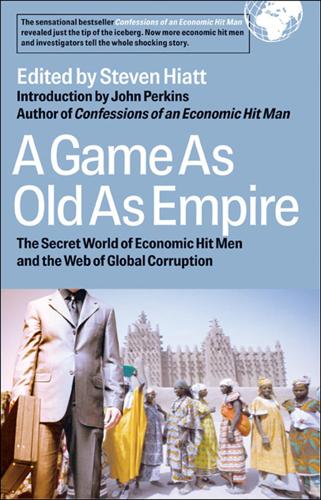
A Game as Old as Empire: The Secret World of Economic Hit Men and the Web of Global Corruption
by
Steven Hiatt; John Perkins
Published 1 Jan 2006
But poorer countries that are trying to develop cannot afford a regime of free trade. There’s no way they can develop their own industries facing competition from the developed countries. It’s just impossible. It’s not going to make the poor less poor.”5 Export Processing Zones: Subsidies for the Multinationals Another condition imposed by the World Bank for the loans Marcos sought was opening up the Philippines to foreign investment in the form of export processing zones (EPZs). A major zone was created across the bay from Manila. Incentives for foreign corporations included: • Permission for 100 percent foreign ownership • Permission to pay a wage lower than Manila’s minimum wage • Tax exemptions • Low rents for land and low charges for water • Government financing of infrastructure and factory buildings, which could be rented or purchased at a low price • Accelerated depreciation of fixed assets6 These projects did not come cheap for the Philippines.
…
As their price for assistance, the IMF and World Bank insist in their structural adjustment programs that indebted developing countries abandon state-led development policies, including tariffs, export subsidies, currency controls, and import-substitution programs. Their approved model of development instead focuses on export-led economic growth, using loans to develop new export industries—for example, to attract light industry to export-processing zones (firms like Nike have been major beneficiaries of these policies). Membership in the World Trade Organization also requires adherence to the IMF’s free trade orthodoxy. Ironically, as Cambridge economist Ha-Joon Chang points out, the First World countries transformed their own economies from a base of traditional agriculture to urban industry by using an arsenal of protectionist tariffs, subsidies, and controls.
…
By June its most trusted agent, César Virata, had been installed as the Philippine prime minister; by August, a cabinet dominated by Bank-sponsored technocrats was in place.38 Marcos’ reward for compliance was receiving a new type of loan: the structural adjustment loan. In contrast to previous project loans, the structural adjustment loan was a program loan. “It involved restructuring the industrial sector through tariff reform, formulating more attractive incentives for foreign investors and export producers, and planning more export processing zones where multinational firms enjoying tax breaks could gain access to cheap Filipino labor.”39 It essentially “formalized World Bank surveillance and control over a wide swathe of the economy.”40 One commentator noted, “The Bank was perfectly aware of the fact that most loans were transferred into the bank accounts of Marcos and his generals; nevertheless, the Bank considered these as necessary bribes for paying the political staff in power.”41 Though Marcos had to heed Bank directives in order to get the money to keep his country afloat, he also had to deal with domestic needs.
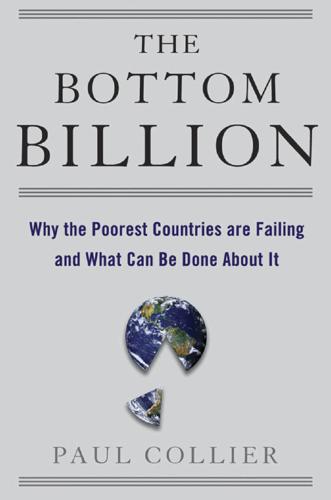
The Bottom Billion: Why the Poorest Countries Are Failing and What Can Be Done About It
by
Paul Collier
Published 26 Apr 2007
Even the “minimal state” model of government that was briefly promoted by the World Bank in the 1980s, in which the functions of government are drastically curtailed, is probably sufficient for success. The government merely has to avoid doing harm rather than actively do much good. Exporters simply need an environment of moderate taxation, macroeconomic stability, and a few transport facilities. Somehow, partly by means of export processing zones, which provide islands of better governance, the government of Bangladesh has managed to keep its bad governance from choking off export activity. Chad, by contrast, is a landlocked country with aid and oil. It has no scope for exporting, and to make use of aid and oil the government must be able to spend money effectively.
…
As jobs become plentiful they provide a degree of economic security not just for the people who get them but for the families behind the workers. And gradually, as jobs expand, the labor market tightens and wages start to rise. This started to happen in Madagascar in the late 1990s. The government established an export processing zone and created policies good enough that firms were sufficiently cost-competitive to take advantage of an American trade arrangement called the Africa Growth and Opportunity Act. Almost overnight the zone grew from very few jobs to 300,000 jobs. That is a lot of jobs in a country with only 15 million people.
…
When the president, Admiral Didier Ratsiraka, lost the election he refused to step down, and he got his cronies to blockade the port, a city his supporters controlled. For eight months the worthy admiral attempted to get his job back through economic strangulation of the wayward electorate. Unsurprisingly, by then the export processing zone had been decimated. By the time it restarted there were only 40,000 jobs and firms were wary of returning. I remember a manager of an American garment company telling me in disbelief that the former president had chosen to wreck his own country. He said, “If it’s like that, then count us out.
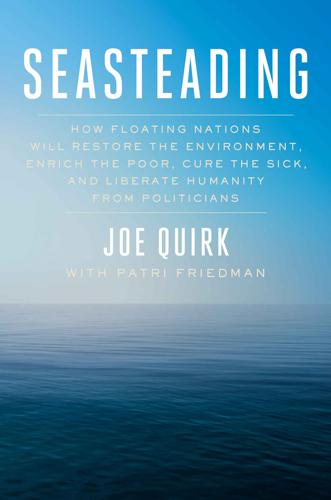
Seasteading: How Floating Nations Will Restore the Environment, Enrich the Poor, Cure the Sick, and Liberate Humanity From Politicians
by
Joe Quirk
and
Patri Friedman
Published 21 Mar 2017
We study Mauritius as a test pilot seastead. Mauritians decided to make their remoteness a strength, becoming consummate middlemen and deal brokers in a global network of trade. Policy makers in Mauritius studied the export processing zones (EPZs), a version of SEZs that encourage exports through exemptions from certain taxes and regulation, in East Asia. In 1970 Mauritius passed the Export Processing Zone Act, a mishmash of powerful incentives to attract foreign manufacturers, including a low flat corporate tax rate of 15 percent (foreign firms receive a subsidy of close to 10 percent, leading to an effective tax rate of 5 percent), favorable long-term loans, and cheap labor drawn from unemployed Mauritian workers, most of whom were women joining the labor force for the first time.
…
In 1970 Mauritius passed the Export Processing Zone Act, a mishmash of powerful incentives to attract foreign manufacturers, including a low flat corporate tax rate of 15 percent (foreign firms receive a subsidy of close to 10 percent, leading to an effective tax rate of 5 percent), favorable long-term loans, and cheap labor drawn from unemployed Mauritian workers, most of whom were women joining the labor force for the first time. In the early 1980s, the unemployment rate was 20 percent. By the late 1980s it was 3 percent. Almost all of this increase in employment (87 percent) and local entrepreneurship (90 percent) was created by an export processing zone that permitted the easy flow of ocean goods. It goes without saying that EPZs will most benefit nations that have a lot of coasts in relation to their size. If you have a lot of coast, you can engage in a lot of ocean trade. If you are small, you can benefit maximally from this ocean trade.
…
National Bureau of Economic Research, Cambridge, MA, 2010), www.nber.org/papers/w16569. See also E. Dommen and B. Dommen, Mauritius an Island of Success: a Retrospective Study 1960–1993 (Wellington, UK): Oxford: Pacific Press, 1999). James Currey. See also P. Hein, “Structural Transformation in an Island Country: The Mauritius Export Processing Zone,” Unctad Review 1, no. 2 (1989): 41–57. See also Stephen King, “The Southern Silk Road,” HSBC Global Research, June 2011. See also World Bank, African Development Bank, and Mauritius Board of Investment 2009. “Investment Climate Assessment: Mauritius 2009.” World Bank, Washington, DC, http://siteresources.worldbank.org/MAURITIUSEXTN/Resources/ica-mauritius-0110.pdf.
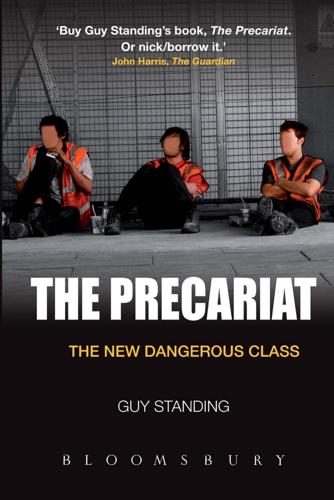
The Precariat: The New Dangerous Class
by
Guy Standing
Published 27 Feb 2011
In today’s industrialising economies, governments have facilitated the movement by setting up export processing zones in which labour regulations are loosened, union bargaining restricted, temporary contracts are the norm and subsidies are thrown at firms. That story is well known. What is less appreciated is how the greatest migration in history is being organised to accelerate and restructure global capitalism. Global capitalism has been built on migrant labour, first in what used to be called the NICs (newly industrialising countries). In the 1980s, I recall many visits to the export processing zones of Malaysia to factories run by some of the great names of global capital, such as Motorola, Honda and Hewlett 106 THE PRECARIAT Packard.
…
Early in the globalisation era, it became apparent that women were taking a growing proportion of all jobs, in a global trend towards the feminisation of labour (Standing, 1989, 1999a). This was feminisation in a double sense of more women being in jobs and more jobs being of the flexible type typically taken by women. The trend reflected labour informalisation, the growth of services and use of young women in export processing zones. It did not mean that women everywhere were improving their incomes or working conditions. Indeed, gender-based wage and social income differentials remained inequitable, if modestly improving in some parts of the world. The jobs that were spreading led to a rising demand for women as well as a shift of men into insecure low-paid jobs long regarded as the norm for women.
…
(Maltby) 138 Canada 79, 114 capital funds 176–7 Capitalism and Freedom (Friedman) 156 care work 61, 86, 125–6 careers, leisure 129 cash transfers 177 see also conditional cash transfers (CCTs) CCTs (conditional cash transfer schemes) 140 Cerasa, Claudio 149 Channel 4, call centre programme (UK) 16 charities 53 children, care for 125 China 28 and contractualisation 37 criminalisation 88 deliberative democracy 181 education 73 immigrants to Italy 4–5 invasion of privacy 135 migrants 96, 106–9, 109–10 old agers 83 191 192 INDEX China 28 (Continued) Shenzhen 133, 137 and time 115 wages 43 youth 76 see also Chindia China Plus One 28 Chindia 26, 27–9, 83 see also China Chrysler Group LLC 43 circulants 90, 92 Citizens United vs Federal Election Commission (US) 152–3 civil rights 14, 94 class, social 6–8, 66–7 Coase, Ronald 29 Cohen, Daniel 57, 66, 69 collaborative bargaining 168 collective attention deficit syndrome 127 commodification of companies 29–31 of education 67–72 and globalisation 26 labour 161–2 of management 40 of politics 148–53 re- 41–2 conditional cash transfers (CCTs) 140 see also cash transfers conditionality 140, 175 and basic income 172–3 and workfare 143–5, 166–7 connectivity, and youth 127 contract status 35, 36, 37, 44, 51, 61 contractors, independent/ dependent 15–16 contractualisation 37 counselling for stress 126 Crawford, Matthew 70 credit 44 crime 5, 129–30 criminalisation 14, 145, 146 crystallised intelligence 85 cultural rights 14 de Tocqueville, Alexis 145 de-industrialisation 5, 37–8 debt, and youth 73–4 Delfanti, Alessandro 78 deliberative democracy 180–1, 182 denizens 14, 93–102, 105, 113, 117, 157–8 Denmark 150 dependent/independent contractors 15–16 deskilling 17, 33, 40, 124 developing countries 12, 27, 60, 65, 105–9 disabled people 86–7, 89, 170 discrimination age 84–5 disability 81 gender 60, 123 genetic profiling 136–7 and migrants 99, 101–2 disengagement, political 24 distance working 38, 53 dole (UK) 45 Duncan Smith, Iain 143 Durkeim, Emile 20 economic security 157, 171, 173–6 The Economist 17–18, 33, 52, 137 economy, shadow 56–7 education 10, 67–73, 135–6, 159–60 Ehrenreich, Barbara 21, 170–1 elites 7, 22, 24, 40, 50 criminality 152 and democracy 181 ethics 165 Italian 148 and the Tea Party (US) 151 empathy 22–3, 137 employment agencies 33 employment security 10b, 11, 17, 36, 51, 117 Endarkenment 70 Enlightenment 24, 70 enterprise benefits 11, 12 environmental issues 167 environmental refugees 93 Esping-Andersen, G. 41 ethics 23–4, 121–2, 165 ethnic minorities 86 EuroMayDay 1, 2, 3, 167 European Union (EU) 2, 39, 146, 147 and migrants 97, 103, 105 and pensions 80 see also individual countries export processing zones 105–6 Facebook 127, 134, 135 failed occupationality 21 INDEX family 27, 44, 60, 65, 126 fear, used for control 32 fictitious decommodification 41 financial capital 171, 176–7 financial sector jobs 39–40 financial shock 2008-9 see Great Recession Financial Times 44, 55, 121, 155 firing workers 31–2 Fishkin, James 180 Fletcher, Bill 170–1 flexibility 18 labour 23–4, 31–6, 53, 60, 61, 65 labour market 6, 120–1, 170 Ford Motor Company 42, 43 Foucault, Michel 88, 133 Foxconn 28–9, 43, 105, 137 see also Shenzhen France criminalisation 88 de-industrialisation 38 education 69 leisure 129 migrants 95, 97, 101–2, 114 neo-fascism 149 and old agers 85 pensions 79 shadow economy 56 Telecom 11 youth 65–6 fraternity 12, 22, 155 freedom 155, 167–70, 172 freelance see temporary employment freeter unions 9 Friedman, Milton 39, 156 functional flexibility 36–8, 52 furloughs 36, 50 gays 63–4 General Motors (GM) 42, 43, 54 genetic profiling 136 Germany 9 de-industrialisation 38 disengagement with jobs 24 migrants 91, 95, 100–1, 114 pensions 79 shadow economy 56 temporary employment 15, 35 wages 40 and women 62 youth and apprenticeships 72–3 193 Glen Beck’s Common Sense (Beck) 151 Global Transformation 26, 27–31, 91, 115 globalisation 5–7, 27–31, 116, 148 and commodification 26 and criminalisation 87–8 and temporary employment 34 Google Street View 134 Gorz, Andre 7 grants, leisure 180–2 Great Recession 4, 49–51, 63, 176 and education 71 and migrants 102 and old agers 82 and pensions 80 and youth 77–8 Greece 52, 56, 117, 181 grinners/groaners 59, 83–4 Habermas, Jürgen 179 Haidt, J. 23 Hamburg (Germany) 3 happiness 140–1, 162 Hardt, M. 130 Hayek, Friedrich 39 health 51, 70, 120, 126 Hitachi 84 Hobsbawm, Eric 3 hormones 136 hot desking 53 Howker, Ed 65 Human Rights Watch 106 Hungary 149 Hurst, Erik 128 Hyatt Hotels 32 IBM 38, 137 identity 9 digital 134–5 work-based 12, 15–16, 23, 158–9, 163 Ignatieff, Michael 88 illegal migrants 96–8 In Praise of Idleness (Russell) 141, 161 income security 10b, 30, 40, 44 independent/dependent contractors 15–16 India 50, 83, 112, 140 see also Chindia individuality 3, 19, 122 informal status 6–7, 57, 60, 96, 119 inshored/offshored labour 30, 36, 37 194 INDEX International Herald Tribune 21 internet 18, 127, 139, 180, 181 surveillance 134–5, 138 interns 16, 36, 75–6 invasion of privacy 133–5, 167 Ireland 52–3, 77 isolation of workers 38 Italy education 69 neo-fascism 148–9 pensions 79 Prato 4–5 and the public sector 52, 53 shadow economy 56 and temporary employment 34 youth 64 Japan 2, 30 and Chinese migrants 110 commodification of companies 30 and migrants 102, 103 multiple job holding 119–20 neo-fascism 152 pensions 80 salariat 17 subsidies 84 and temporary employment 15, 32–3, 34–5, 41 and youth 66, 74, 76, 77 job security 10b, 11, 36–8 Kellaway, Lucy 83–4 Keynes, John Maynard 161 Kierkegaard, Søren 155 Klein, Naomi 148 knowledge 32, 117, 124–5, 171 labour 13, 115, 161–2 labour brokers 33–4, 49, 110, 111, 167, 168 labour flexibility 23–4, 31–45 labour intensification 119–20 labour market flexibility 6 labour security 10–11, 10b, 31 Laos 112 lay-offs see furloughs Lee Changshik 21 legal knowledge 124–5 legal processing 50 Legal Services Act of 2007 (UK) (Tesco Law) 40 leisure 13, 128–30 see also play lesbians 63–4 Liberal Republic, The 181 Lloyds Banking Group 50–1 localism 181–2 long-term migrants 100–2 loyalty 53, 58, 74–5 McDonald’s 33 McNealy, Scott 69 Malik, Shiv 65 Maltby, Lewis 138 Manafort, Paul 152 management, commodification of 40 Mandelson, Peter, Baron 68 Maroni, Roberto 97 marriage 64–5, 92 Martin, Paul 141 Marx, Karl 161 masculinity, role models for youth 63–5 Massachusetts Institute of Technology 68–9 Mayhew, Les 81 Mead, Lawrence 143 mergers, triangular 30 Mexico 91 Middle East 109 migrants 2, 13–14, 25, 90–3, 145–6 and basic income 172 and conditionality 144 denizens 93–102, 157–8 government organised 109–13 internal 105–9 and queuing systems 103–5 and recession 102–3 Mill, John Stuart 160 Morris, William 160, 161 Morrison, Catriona 127 multinational corporations 28, 92 multitasking 19, 126–7 National Broadband Plan 134 near-sourcing/shoring 36 Negri, A. 130 neo-fascism 25, 147–53, 159, 175, 183 Netherlands 39, 79, 114, 149–50 New Thought Movement 21 New York Times 69, 119 News from Nowhere (Morris) 161 Niemöller, Martin 182 INDEX non-refoulement 93 Nudge (Sunstein/Thaler) 138–9 nudging 138–40, 155–6, 165, 167, 172, 178, 182 numerical flexibility 31–6 Obama, Barack 73, 138–9, 147, 148 Observer, The 20 occupations associations of 169–70 dismantling of 38–40 freedom in 162–4 obsolescence in 124 offshored/inshored labour 30, 36, 37 old agers 59, 79– 86, 89 old-age dependency ratio 80–1 Organisation for Economic Co-operation and Development (OECD) 27 origins of the precariat 1–5 outsourcing 29, 30, 33, 36, 37, 49 Paine, Thomas 173 panopticon society 132–40, 142–3 Parent Motivators (UK) 139–40 part-time employment 15, 35–6, 51, 61, 82 Pasona 33 paternalism 17, 29, 137, 153, 178, 182 nudging 138–40, 155–6, 165, 167, 172, 178, 182 pensions 42, 51, 52, 76–7, 79–81, 84–6 PepsiCo 137 personal deportment skills 123 Philippines 109 Phoenix, University of 71 Pigou, Arthur 117, 125 play 13, 115, 117, 128, 141 pleasure 141 Polanyi, K. 163, 169 political engagement/disengagement 24, 147 Portugal 52, 56 positive thinking 21, 86 Prato (Italy) 4–5 precariat (definition) 6, 7–13 precariato 9 precariatisation 16–18 precarity traps 48–9, 73–5, 114, 129, 144, 178 pride 22 prisoners 112, 146 privacy, invasion of 133–5, 167 private benefits 11 productivity, and old age 85 proficians 7–8, 15, 164 proletariat 7 protectionism 27, 54 public sector 51–4 qualifications 95 queuing systems 103–5 racism 97–8, 101, 114, 149 Randstad 49 re-commodification 41–2 recession see Great Recession refugees 92, 93, 96 regulation 23, 26, 39–40, 84, 171 Reimagining Socialism (Ehrenreich/ Fletcher) 170–1 remote working 38, 53 rentier economies 27, 176 representation security 10b, 31 retirement 42, 80–3 rights 14, 94, 145, 163, 164–5, 169 see also denizens risk management 178 Robin Hood gang 3 role models for youth 63–5 Roma 97, 149 Rossington, John 100 Rothman, David 88 Russell, Bertrand 141, 161 Russell, Lucie 64 Russia 88, 115 salariat 7, 8, 14, 17, 32 Santelli, Rick 150 Sarkozy, Nicolas 69, 97, 149 Sarrazin, Thilo 101 Schachar, Ayelet 177 Schneider, Friedrich 56 Schwarzenegger, Arnold 71 seasonal migrants 98–100 security, economic 157, 171, 173–6 self-employment 15–16, 66, 82 self-esteem 21 self-exploitation 20, 122–3 self-production 11 self-regulation 23, 39 self-service 125 services 37–8, 63 195 196 INDEX Sex, Drugs and Chocolate: The Science of Pleasure (Martin) 141 sex services 63 sexism, reverse 123 shadow economy 56–7, 91 Shenzhen (China) 133, 137 see also Foxconn Shop Class as Soulcraft (Crawford) 70 short-time compensation schemes 55–6 side-jobs 119–20 skill reproduction security 10b skills 157, 176 development of 30, 31, 40 personal deportment 123 tertiary 121–4 Skirbekk, Vegard 85 Smarsh 138 Smile or Die (Ehrenreich) 21 Smith, Adam 71 snowball theory 78 social class 6–8, 66–7 social factory 38, 118, 132 social income 11–12, 40–5, 51, 66 social insurance 22, 104 social memory 12, 23, 129 social mobility 23, 57–8, 175 social networking sites 137 see also Facebook social rights 14 social worth 21 sousveillance 134, 135 South Africa, and migrants 91, 98 South Korea 15, 55, 61, 75 space, public 171, 179–80 Spain BBVA 50 migrants 94 and migrants 102 pensions 79 and the public sector 53 shadow economy 55–6 temporary employment 35 Speenhamland system 55, 143 staffing agencies 33–4, 49, 110, 111, 167, 168 state benefits 11, 12 status 8, 21, 32–3, 94 status discord 10 status frustration 10, 21, 63, 67, 77, 78, 79, 89, 114, 123, 160 stress 19, 126, 141, 141–3 subsidies 44, 54–6, 83–6, 176 suicide, work-related 11, 29, 58, 105 Summers, Larry 148 Sun Microsystems 69 Sunstein, Cass 138–9 surveillance 132–6, 153, 167 see also sousveillance Suzuki, Kensuke 152 Sweden 68, 110–11, 135, 149 symbols 3 Taking of Rome, The (Cerasa) 149 taxes 26 and citizenship 177 France 85 and subsidies 54–5 Tobin 177 United States (US) 180–1 Tea Party movement 150–1 technology and the brain 18 internet 180, 181 surveillance 132–6 teleworking 38 temporary agencies 33–4, 49, 110, 111, 167, 168 temporary employment 14–15, 49 associations for 170 Japan 9 and numerical flexibility 32–6 and old agers 82 and the public sector 51 and youth 65 tertiarisation 37–8 tertiary skill 121–4 tertiary time 116, 119 tertiary workplace 116 Tesco Law (UK) 40 Thailand, migrants 106 Thaler, Richard 138–9 therapy state 141–3, 153 Thompson, E.P. 115 time 115–16, 163, 171, 178 labour intensification 119–20 tertiary 116, 119 use of 38 work-for-labour 120–1 titles of jobs 17–18 Tobin taxes 177 Tomkins, Richard 70 towns, company 137 INDEX toy-factory incident 108–9 trade unions 1, 2, 5, 10b, 26, 31, 168 and migration 91 public sector 51 and youth 77–8 see also yellow unions training 121–4 triangular mergers 30 triangulation 34 Trumka, Richard 78 trust relationships 8–9, 22 Twitter 127 Ukraine 152 undocumented migrants 96–8 unemployment 145 benefits 45–8, 99, 104 insurance for 175 voluntary 122 youth after recession 77 uniforms, to distinguish employment status 32–3 unions freeter 9 yellow 33 see also trade United Kingdom (UK) 102–3 benefit system 173 Channel 4 call centre programme 16 company loyalty 74–5 conditionality 143–5, 166–7 criminalisation 88 de-industrialisation 38 disabled people 170 and education 67, 70, 71 financial shock (2008-9) 49–51, 71 labour intensification 119 Legal Services Act (2007) (Tesco Law) 40 leisure 129 migrants 91, 95, 99, 103–5, 114, 146 neo-fascism 150 paternalism 139–40 pensions 43, 80 and the public sector 53 public spaces 179 and regulation of occupational bodies 39 shadow economy 56 and social mobility 56–8 and subsidies 55 197 temporary employment 15, 34, 35 as a therapy state 142 women 61–2, 162 workplace discipline 138 youth 64, 76 United States (US) care for children 125 criminalisation 88 education 69, 70–1, 73, 135–6 ethnic minorities 86 financial shock (2008-9) 49–50 migrants 90–1, 93, 94, 97, 103, 114 neo-fascism 150–1, 152–3 old agers 82–3, 85 pensions 42, 52, 80 public sector 52 regulation of occupational bodies 39 social mobility in 57–8 subsidies 55, 56 taxes 180–1 temporary employment 34, 35 volunteer work 163 wages and benefits 42 women 62, 63 youth 75, 77 universalism 155, 157, 162, 180 University of the People 69 University of Phoenix 71 unpaid furloughs 36 unpaid leave 50 uptitling 17–18 utilitarianism 88, 132, 141, 154 value of support 11 Vietnam 28, 111–12 voluntary unemployment 122 volunteer work 86, 163–4 voting 146, 147, 181 Wacquant, L. 132 wages 8, 11 and benefits 41–2 family 60 flexibility 40–5, 66 individualised 60 and migrants 103 and temporary workers 32, 33 Vietnam 28 see also basic income Waiting for Superman (documentary) 69 Wall Street Journal 35, 163 198 INDEX Walmart 33, 107 Wandering Tribe 73 Weber, Max 7 welfare claimants 245 welfare systems 44 Wen Jiabao 105 Whitehead, Alfred North 160 Williams, Rob 62 wiretapping 135 women 60–5 and care work 125–6 CCTs (conditional cash transfer schemes) 140 labour commodification 161 and migration 92 multiple jobholding 119–20 reverse sexism 123 work 115, 117, 160–1 and identity 158–9 and labour 13 right to 145, 163, 164–5 security 10b work-for-labour 120–1, 178 work-for-reproduction 124–7 work–life balance 118 worker cooperatives 168–70 workfare 143–5, 166–7 working class 7, 8 workplace 116, 122, 130, 131 discipline 136–8 tertiary 116 Yanukovich, Victor 152 yellow unions 33 youth 59, 65–7, 89, 156 commodification of education 67–72 connectivity 127 and criminality 129–30 generational tension 76–7 and old agers 85 precarity traps 73–5 prospects for the future 78–9 and role models 63–5 streaming education 72–3 zero-hour contracts 36
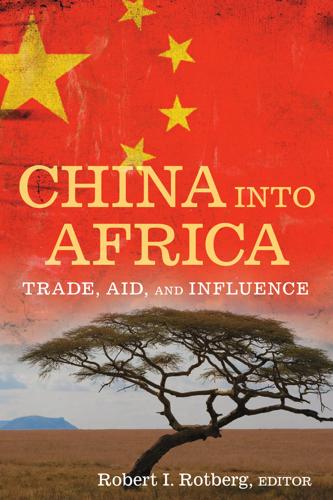
China into Africa: trade, aid, and influence
by
Robert I. Rotberg
Published 15 Nov 2008
The Chinese not only purchase Africa’s unprocessed returns of the subsoil, the land, and offshore drilling, but the Chinese also invest for the long term, thus expanding Africa’s permanent capacity in the mining and petroleum sectors. To service these extractive industries and manufacturing capabilities more generally, China also constructs or refurbishes roads and railways, creates export processing zones, supplies equipment, and builds up national industrial bases. Where sub-Saharan African nation-states are particularly fragile or 1 01-7561-4 ch1.qxd 9/16/08 4:06 PM Page 2 2 robert i. rotberg questionably ruled, China also supplies arms and military firepower, builds barracks, provides uniforms, and offers various types of technical assistance, army to army.
…
Angola, Equatorial Guinea, Nigeria, Congo (Brazzaville), and the Sudan provide 85 percent of all of China’s imports from Africa.16 All are oil producers. China’s share of sub-Saharan Africa’s total trade is about 10 percent. China is also pioneering the establishment of Special Economic Zones, or export processing zones, throughout sub-Saharan Africa. This hitherto little noticed injection of Chinese expertise is discussed at length by Martyn Davies in chapter 7. The African goal is to attract foreign direct investment to the zones already established or contemplated in Kenya, Mauritius, Nigeria, and Zambia.
…
Indeed, the Chinese learned from the European colonialists, who obtained free trade concessions in China in the nineteenth century. These capitalist enclaves became the trading hubs of the region and to this day are still the wealthiest cities in China—Hong Kong, Guangzhou, Macao, and Shanghai. As China establishes export processing zones in Africa, it will earn revenue from the zones’ increased exports and generate employment—crucial to offset criticism from civil society and political opposition groups that may be opposed to offering concessions to foreign investors. This offset is particularly relevant where Chinese investments have contended with stereotypes of poor governance and political motivation in relation to their overseas investments.

The Globalization Paradox: Democracy and the Future of the World Economy
by
Dani Rodrik
Published 23 Dec 2010
Domestic industry received significant incentives and trade protection, and by the end of the 1960s a substantial group of light-manufacturing producers oriented toward the home market had been created. Starting in 1970, the government began to promote export-oriented firms too, mainly in garments, under a very successful export-processing zone (EPZ) scheme, using tax incentives, import-duty exemptions, and weaker labor rules. Industrial activity was further stimulated through currency devaluations in the 1980s. These two segments of industry—one oriented toward the home market and the other oriented toward export—co-existed for quite some time.
…
It makes dollars plentiful and their price low, reducing the competitiveness of domestic industries on global markets.31 In a second-best world, increasing transaction costs on international finance may make sense. There are diverse ways in which a particular constraint can be lifted, some more attuned to domestic circumstances than others. If you want to increase the economy’s outward orientation, this can be achieved via export subsidies (as in South Korea and Taiwan), via an export-processing zone (as in Mauritius), via Special Economic Zones (as in China)—or via free trade (as in Hong Kong) for that matter. Domestic industries can be promoted through subsidized credit (South Korea), tax incentives (Taiwan), or trade protection (Brazil, Mexico, and Turkey). Property rights can be enhanced by importing and adapting foreign legal codes (as in Japan during the Meiji Restoration) or by developing domestic variants (as in China and Vietnam).
…
Probably the most significant external constraint that developing nations face as a consequence of hyperglobalization are the restrictions on industrial policies that make it harder for countries in Latin America, Africa, and elsewhere to emulate the development strategies that East Asian countries have employed to such good effect. Unlike GATT, which left poor nations essentially free to use any and all industrial policies, the WTO imposes several restrictions. Export subsidies are now illegal for all but the poorest nations, denying developing nations the benefit of export-processing zones of the type that Mauritius, China, and many Southeast Asian nations have used.15 Policies that require firms to use more local inputs (so-called “domestic content requirements”) are also illegal, even though such policies helped China and India develop into world-class auto parts suppliers.

The Hidden Globe: How Wealth Hacks the World
by
Atossa Araxia Abrahamian
Published 7 Oct 2024
“And he’d say, very slowly and deliberately, that it was la zone franche industrielle d’exportation”: the export-processing zone (EPZ). “Those words, combined with the different geography and architecture—even though I didn’t know what it did, to me it was like, wow, this is something special. So as I grew up and went back and forth to Mauritius, the zone kind of anchored me.” The factory in question was the industrialist’s answer to the freeport, one of thousands of such factories now scattered across the world. Like a freeport, an export-processing zone is an inland island (in this case, on an actual island) in which national rules concerning customs and taxation don’t fully apply.
…
The first cognitive dissonance for me was when I started at Flagstaff, and I was shocked by the simplicity and the ideological, almost religious, views Dick had,” he recalls. “He was so rabidly pro-American; he believed in the American way of life. He thought everyone wants to be American, and that export-processing zones are the way to educate your labor force, and consumer society emerges. There was no maliciousness, it was a true Doris Day attitude. Jeanne was the same, she was the American dame, from a good family in New England.” Baissac continued, “Hearing them talk about EPZ as a tool of civilization—it was never explicit, but it was implicit.
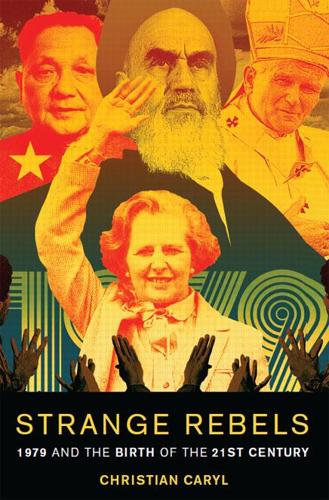
Strange Rebels: 1979 and the Birth of the 21st Century
by
Christian Caryl
Published 30 Oct 2012
Deng and his colleagues—at least those who wanted to pay attention to the outside world—were also acutely aware of the extraordinary rise in living standards already engineered by Hong Kong and Taiwan, which (like Japan, Singapore, and South Korea) had also made strategic decisions to reject “self-sufficiency” and to actively participate in global trade. Taiwan, in particular, had reaped a variety of benefits from its “Export Processing Zones,” areas with special commercial, legal, and tax regimes that were designed to entice foreign investors to take advantage of a well-trained but low-wage labor force. The Taiwanese were gambling that the shortfalls in tax and customs revenues would be balanced out by the know-how that they would acquire in management and production techniques (not to mention the extra employment).
…
But it is probably more accurate to say that the local officials who controlled the companies disposed of their assets just as if they owned them; in fact, therefore, the TVEs were private in all but name.4 In any case, the dissolution of the communes paved the way for an astonishing flowering of grassroots commerce. The Special Economic Zones took longer to have an impact. But this lay in the nature of their economic mission. The SEZs—modeled on the “Export Processing Zones” in other countries—were at first aimed entirely at production for foreign markets. (For a while in 1979–1980, they were officially referred to as “Special Export Zones.”) As overseas investors piled in, the amount of goods manufactured in the zones steadily climbed. Local governments benefited in the form of taxes and administrative fees, while local people drew attractive wages—both of which stimulated further growth.
…
Almost from the start, China received advanced technological know-how and substantial investment from Japan. Practical experience in manufacturing and considerable amounts of cash came from Hong Kong. Taiwan’s history of post-World War II land reform offered a vital precedent for the mainland’s efforts to boost private farming, and its experiments with export processing zones in the 1960s and 1970s spurred Deng’s interest in the Special Economic Zones. Taiwan, Singapore, and South Korea all showed just how effective the combination of dictatorship and market-oriented economic development could be. There is little that Deng and his comrades did in the late 1970s and 1980s that had not been done by these countries before them; what was most radical about the Chinese Communist reformers was their willingness to imagine how a similar program of reforms could be translated into the context of a communized society.
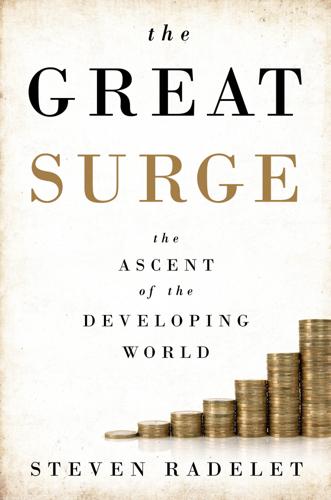
The Great Surge: The Ascent of the Developing World
by
Steven Radelet
Published 10 Nov 2015
The earlier experiments by South Korea, Taiwan, Hong Kong, and Singapore in outward orientation and openness were enormously successful, providing examples that contrasted with the failures of countries that had turned inward. India, Poland, Hungary, Brazil, Chile, Ghana, Turkey, and many other developing countries began to encourage trade—some dramatically, others more gradually. Governments lowered tariff rates, reduced quotas, established export processing zones, streamlined customs clearance, and reduced red tape and bottlenecks, all aimed at making businesses more competitive in global markets. Some went further and subsidized exports, either through direct assistance to selected firms or through undervalued exchange rates that provided extra incentives to exporters.
…
All of the fast-growing “miracle” countries of Asia have used their location to take advantage of sea-based trade to drive job creation and development. Singapore boomed because of its port location on the busy Strait of Malacca, halfway between Middle Eastern oil supplies and Japan. South Korea and Taiwan moved forward by producing manufactured goods in export processing zones in major port cities. The Philippines converted the Subic Bay Naval Station into an electronics hub. In Indonesia—where it was often said that its thirteen thousand islands spread across the sea showed that “God meant Indonesia for free trade”—factories near the major seaports helped launch the country forward.
…
In many countries, considerable scope remains for reducing tariff and other trade restrictions. In others, limited amounts of protection may be helpful in some circumstances, especially if tariffs are time limited and applied in sectors where firms can become competitive quickly. Many of the most successful exporters have employed various export platforms, such as export processing zones, which help businesses reduce costs and compete in global markets. For many developing countries, skilled management of natural resources will be central to sustaining inclusive economic growth. Many countries remain highly dependent on natural resource exports, and are therefore vulnerable to the natural resource “curse.”
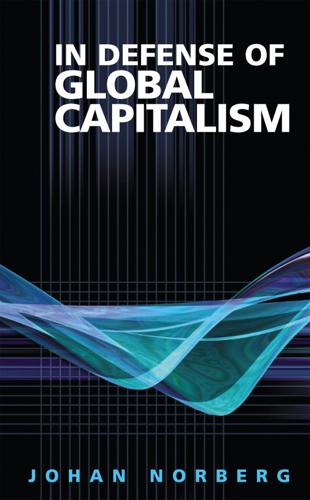
In Defense of Global Capitalism
by
Johan Norberg
Published 1 Jan 2001
If Nike were to withdraw, on account of boycotts and tariff walls from the Western world, the suppliers would have to shut down, and the employees would be put out of work or would move to more dangerous jobs with lower, less steady wages in native industry or agriculture. Many developing countries have what are called economic ‘‘free zones,’’ also known as export-processing zones, mainly for export industries. There, firms are allowed to start up with especially advantageous tax conditions and trade regulations. Anti-globalists characterize the free zones as havens for slave-driving and inhuman working conditions. There are indeed abuses and scandals in some quarters, and resolute action is needed to prohibit them.
…
In her book No Logo, which quickly became popular in anticapitalist circles, Canadian activist Naomi Klein claims that Western companies have created terrible working conditions in such zones. But she does not offer any proof. She has only heard a few rumors of bad conditions in one Philippine export-processing zone, which she admits having traveled to only because it was one of the worst. When the OECD tried to obtain an overall picture of these zones, it found that they had multiplied job opportunities for the poor, and that wages there were higher than in the rest of the country. In the great majority of the thousand or so small zones, the same labor legislation applied as elsewhere in the country.
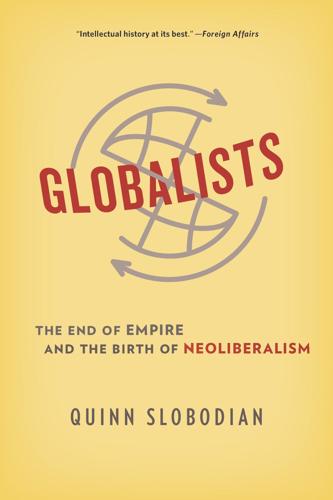
Globalists
by
Quinn Slobodian
Published 16 Mar 2018
Deng Xiaoping’s reforms started a process toward China’s own form of nonmajoritarian capitalism, slowly introducing market freedoms without expanding political representation. The price mechanism was permitted without the mechanism of popular sovereignty—the multiparty election. In 1979, China opened the country’s first export processing zones in the Pearl River Delta, a region of exception outside of the national tax structure that would become a defining form of neoliberal-style development by the 1990s.100 This future was distant in the 1970s, however, and in the decade of the NIEO, the situation still looked dire to neoliberals.
…
Scharpf, “Economic Integration, Democracy and the Welfare State,” Journal of European Public Policy 4, no. 1 (March 1997): 18–36; David Schneiderman, Constitutionalizing Economic Globalization: Investment Rules and Democracy’s Promise (New York: Cambridge University Press, 2008); M. Sornarajah, The International Law on Foreign Investment, 3rd ed. (New York: Cambridge University Press, 2010); Streeck, Buying Time. 21. See Keller Easterling, Extrastatecraft: The Power of Infrastructure Space (New York: Verso, 2014); Patrick Neveling, “Export Processing Zones, Special Economic Zones and the Long March of Capitalist Development Policies during the Cold War,” in Decolonization and the Cold War: Negotiating Independence, ed. Leslie James and Elisabeth Leake, 63–84 (London: Bloomsbury, 2015); Ronen Palan, The Offshore World: Sovereign Markets, Virtual Places, and Nomad Millionaires (Ithaca, NY: Cornell University Press, 2003). 22.
…
Hutt Papers, Hoover Institution Archives, Stanford University (hereafter cited as Hutt Papers), box 5. 98. Hayek, The Political Order of a Free People, 163. 99. Machan, “Meeting of the (Free) Minds.” 100. Barry Naughton, The Chinese Economy: Transitions and Growth (Cambridge, MA: MIT Press, 2007), 382. On EPZs, see Patrick Neveling, “The Global Spread of Export Processing Zones and the 1970s as a Decade of Consolidation,” in Changes in Social Regulation: State, Economy, and Social Protagonists since the 1970s, ed. Knud Andersen and Stefan Müller (Oxford: Berghahn Books, 2017), 23–40. 101. George J. Stigler, “Why Have the Socialists Been Winning?,” Ordo 30 (1979): 63.

Cities Under Siege: The New Military Urbanism
by
Stephen Graham
Published 30 Oct 2009
In the most extreme examples, these encompass green zones, military prisons, ethnic and sectarian neighbourhoods and military bases; they are growing around strategic financial districts, embassies, tourist and consumption spaces, airport and port complexes, sports arenas, gated communities and export processing zones. In both domains, efforts to profile urban populations are linked with similar systems which observe, track, and target dangerous bodies amid the mass of urban life. We thus see parallel deployments of high-tech satellites, drones, ‘intelligent’ CCTV, ‘non-lethal’ weaponry, data mining and biometric surveillance in the very different contexts of cities at home and abroad.
…
It is made very clear to intruders judged as illegitimate that they must leave or face serious consequences. 4.3 A Cruise ship anchored off the ‘garrison tourism’ resort of Labadee, Haiti, 2008. Hard-edged urban enclaves, notable among the ‘spatial products’ of transnational neoliberalism, are difficult to miss nowadays. Foreign-trade and export-processing zones, established to entice corporations to use cheap, disciplined local labour for their manufacturing and logistics functions, increasingly operate as quasi-autonomous realms, bordered off from their host cities and nations.51 Offshore financial enclaves, as well as the hypergentrified cores of key global cities such as London, present themselves as utopias for the super-rich.
…
To back up their arguments, Alsayyad and Roy deploy a wide range of examples: affluent gated communities, regulated squatter settlements, a proliferating range of incarceration facilities and torture-camp cities where ‘violence is constantly deployed in the name of peace and order’.201 They also mention the insurgent urban governance which is emerging in places like Hezbollah-controlled towns in Lebanon, Hamas-controlled Gaza, and other ‘neighbourhood-level Islamic republics being declared by religious fundamentalist groups’.202 To this list one could add the proliferation of camp-like security architectures which sustain global financial cores, export-processing zones, tourist enclaves, offshore finance enclosures, logistics hubs, ports, airport cities, research complexes and ‘technopoles’, as well as the temporary urban militarizations imposed for mega sports events and political summits. All their examples, argue Alsayyad and Roy, involve ‘private systems of governance that operate as medieval fiefdoms, imposing truths and norms that are often contrary to national law’.203 As in medieval times, the result is the emergence of the modern city as what Holston and Appadurai have called a ‘honeycomb of jurisdictions’, a ‘medieval body [of] overlapping, heterogeneous, non-uniform, and increasingly private memberships’.204 Permeating all of this are the biometric technologies, mobilized to track, to identify and to control access.

Empty Vessel: The Story of the Global Economy in One Barge
by
Ian Kumekawa
Published 6 May 2025
BACK TO NOTE REFERENCE 23 Hannah Appel, “Offshore Work: Oil, Modularity, and the How of Capitalism in Equatorial Guinea,” American Ethnologist 39, no. 4 (November 2012): 692–709 BACK TO NOTE REFERENCE 24 Adunbi, Enclaves of Exception, 92–93. BACK TO NOTE REFERENCE 25 Howard Stein, “Africa, Industrial Policy, and Export Processing Zones: Lessons from Asia,” in Good Growth and Governance in Africa: Rethinking Development Strategies, ed. Akbar Norman et al. (Oxford: Oxford University Press, 2011), 322–44. “Global Free Zones of the Year 2018—Winners,” Foreign Direct Investment, October 13, 2018; “A Brief History of Free Zone Legislation in Nigeria,” Oil and Gas Free Zones Authority Nigeria, 2020, www.ogfza.gov.ng.
…
BACK TO NOTE REFERENCE 32 Thomas Farole, Special Economic Zones in Africa: Comparing Performance and Learning from Global Experience (Washington, DC: World Bank, 2011). BACK TO NOTE REFERENCE 33 Deinibiteim Monimah Harry, “Value Addition Policy in Nigeria’s Export Processing Zones: Lessons from the Asian Economies,” Mediterranean Journal of Social Sciences 9, no. 3 (May 2018): 165–72. See also Omolade Adnubi and Howard Stein, “The Political Economy of China’s Investment in Nigeria: Prometheus or Leviathan,” in China-Africa and an Economic Transformation, ed. Arkebe Oqubay and Justin Yifu Lin (Oxford: Oxford University Press, 2019), 192–215.

The New Class War: Saving Democracy From the Metropolitan Elite
by
Michael Lind
Published 20 Feb 2020
In the same period, multinationals cut capital-investment spending in the US by 0.2 percent a year, while increasing it abroad by 4 percent a year.14 These foreign workforces included much low-wage labor on goods and services for export, or reexport, to the US or Europe. The global profits of many Western managers and investors depend in large part on the labor of poor women in foreign sweatshops, as Delia Aquilar observes: “From the maquiladoras in Mexico . . . to assembly plants and export processing zones [EPZs] in Central America, the Caribbean, and the Pacific Rim, to subcontractors and garment sweatshops in global cities and in nations of the periphery, it is women’s labor that allows and guarantees maximum profitability for the corporate elite, a tiny minority of the world’s inhabitants.”15 The economist David Autor and several coauthors have shown that “the China shock”—the flood of Chinese imports into the US following China’s entry into the WTO—did far more damage to US manufacturing employment than the previous consensus had held, destroying 2 million to 2.4 million net jobs in manufacturing and manufacturing-related industries between 1999 and 2011 and contributing to the “employment sag” in the US in that period.16 A study in 2013 by Michael W.
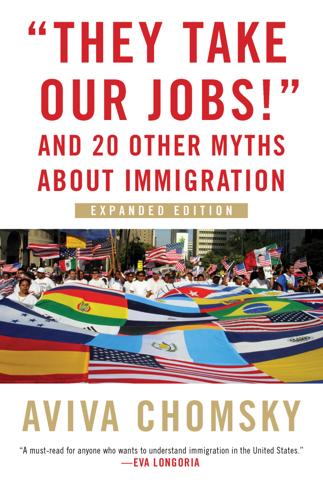
"They Take Our Jobs!": And 20 Other Myths About Immigration
by
Aviva Chomsky
Published 23 Apr 2018
-owned sugar plantations; the second brought about the modern version of colonialism (sometimes called “neocolonialism”), in which the governments of poor countries are forced to create low-wage, low-tax, low-regulation environments for the benefit of U.S. corporations. (The proliferation of these export-processing zones there explains why so many of our clothes bear tags saying “Made in the Dominican Republic.”) The United States has the highest standard of living in the world, and it maintains it by using its laws, and its military, to enforce the extraction of resources and labor from its modern version of colonies, with little compensation for the populations.

Belt and Road: A Chinese World Order
by
Bruno Maçães
Published 1 Feb 2019
A country’s manufacturing imports are more likely to be intermediate goods—that is, commodities, components, or semi-finished products that a country uses to make its own products. These could be final products or new segments in a global network of producers and suppliers. One third of China’s imports are destined for export processing zones, which account for almost half of the country’s exports. Global value chains can become so complex that imports can also contain returned value added that originated in the importing country. In China, nearly 7 per cent of the total value of imported intermediate goods reflects value added that originated in China.
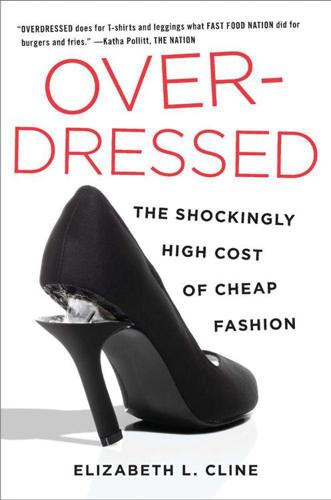
Overdressed: The Shockingly High Cost of Cheap Fashion
by
Elizabeth L. Cline
Published 13 Jun 2012
Dhaka is increasingly becoming a place for foreign investment, and you can see the wealth it’s creating in the gated mansions on the private roads around the Gulshan District. Masud has been in Bangladesh’s garment industry for five years and has owned his own sweater factory for three. He was formerly working for a Korean-owned factory in an Export Processing Zone (EPZ), a special district that gives tax breaks to foreign investors who want to manufacture goods in Bangladesh. The factories in Bangladesh’s EPZs, of which there are eight, are mostly owned by Japanese and Korean companies. Masud’s company now matches any number of factories in and around Dhaka to foreign clients, one of which is G-III Apparel Group, which handles the design and manufacture of select lines for huge brands like Calvin Klein, Ellen Tracy, Kenneth Cole, and Levi’s.

How to Run the World: Charting a Course to the Next Renaissance
by
Parag Khanna
Published 11 Jan 2011
The island nation was the first in Africa to abolish trade barriers, immediately attracting textile manufacturers from Hong Kong, but it also lowered restrictions for locals to start businesses so they could compete to become suppliers to foreign firms; it even expanded secondary education so that its workers would be worth higher wages. Eventually, local entrepreneurs acquired the know-how to get into the textile business themselves, and they lured Mauritian workers away from foreign-owned factories. By the late 1990s, indigenous investors owned more than half of the firms operating in the country’s export-processing zones. Yet even when local companies compete with the foreigners who have set up shop in their backyards, there are still benefits to be had. In Kenya, Tanzania, and Uganda, for example, foreign firms are more productive than local ones, but they have introduced valuable management skills to local markets, trained native workers, and invested in infrastructure.
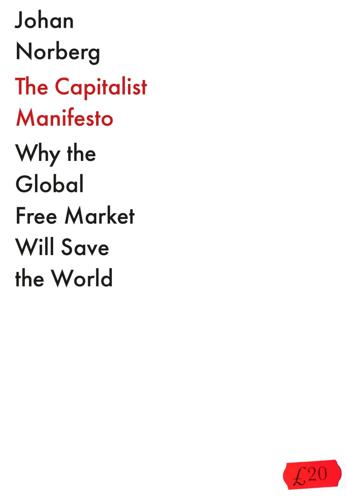
The Capitalist Manifesto
by
Johan Norberg
Published 14 Jun 2023
In 1961, the Nobel laureate James Meade predicted that in such a small country, with ethnic divisions, without natural resources and dependent on a single commodity (sugar), the ‘outlook for peaceful development is weak’. But precisely because Mauritius was so small, it realized early on that it could not do without world trade, and import substitution was abolished as early as the 1970s. The country introduced export-processing zones where a deregulated textile industry could grow, and the economy has continued to diversify with a modern service sector. After uninterrupted high growth, Mauritius was classified by the World Bank as a high-income country in 2019. Even though it slipped back because of Covid-19, it will probably soon rise again.
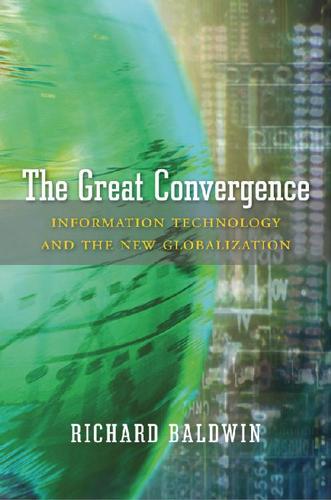
The Great Convergence: Information Technology and the New Globalization
by
Richard Baldwin
Published 14 Nov 2016
But don’t get your hopes up. I don’t have the answers. New Policy Questions For policymakers, the critical issue is how to make global value chains work for their nation’s development. It is not enough to draw in a few offshore production facilities that create a few new jobs in an export processing zone. Industrialization and broader development only come by densifying participation in these international production networks. This can happen far faster as global value chains remove bottlenecks, but global value chains are not magical. They are only door openers. Most of the hard work in pushing a nation into middle-income ranks and beyond still has to be done at home.
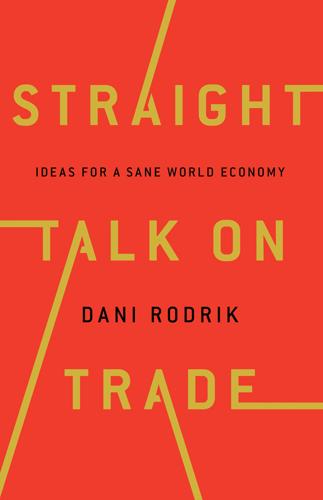
Straight Talk on Trade: Ideas for a Sane World Economy
by
Dani Rodrik
Published 8 Oct 2017
The same type of selective, targeted reforms in urban industrial development, trade, foreign investment, and finance would unfold over the next three decades, keeping the Chinese miracle going and going. Or consider Mauritius, one of Africa’s few growth successes in the twentieth century, which experienced its growth acceleration in 1971. The trigger there seems to have been the establishment of a largely unregulated export processing zone that led to a boom in garment exports, even as the rest of the economy remained heavily controlled and protected. What is common to these cases is that the takeoffs were associated with a targeted removal of key obstacles to growth, rather than broad liberalization and economy-wide reforms.

Globish: How the English Language Became the World's Language
by
Robert McCrum
Published 24 May 2010
As I returned to London, I reflected that ‘Globish’ was more than just a new word for a dialect or an international communications tool. It was a description of a lingua franca, but with a difference. On further consideration, it was also a metaphor for the novelty of global English culture today. 3 Global capitalism is the mechanism of this transformation, which has also spread into the Export Processing Zones of Far East Asia, into the sweatshops of Bangkok and Shanghai, and into the hypermarkets of Japan and Korea. The world’s English can be seen at work in a new non-alcoholic drink, Kidsbeer, marketed to children in Japan with the English slogan ‘Even Kids Can’t Stand Life Unless They Have A Drink’.
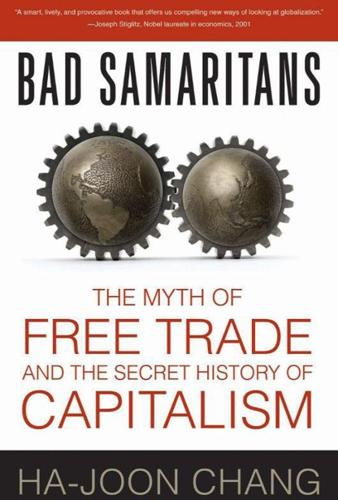
Bad Samaritans: The Myth of Free Trade and the Secret History of Capitalism
by
Ha-Joon Chang
Published 26 Dec 2007
As a result, of all countries outside the communist bloc, Japan has received the lowest level of FDI as a proportion of its total national investment.46 Given this history, the Japanese government saying that ‘[p]lacing constraints on [foreign direct] investment would not seem to be an appropriate decision even from the perspective of development policy’ in a recent submission to the WTO is a classic example of selective historical amnesia, double standards and ‘kicking away the ladder’47 Korea and Taiwan are often seen as pioneers of pro-FDI policy, thanks to their early successes with export-processing zones (EPZs), where the investing foreign firms were little regulated. But, outside these zones, they actually imposed many restrictive policies on foreign investors. These restrictions allowed them to accumulate technological capabilities more rapidly, which, in turn, reduced the need for the ‘anything goes’ approach found in their EPZs in subsequent periods.

The New Harvest: Agricultural Innovation in Africa
by
Calestous Juma
Published 27 May 2017
In Kenya, Entrepreneurship 185 more than 95% of the fruit and vegetables produced move through their value chain with only smallholders and SMEs.6 A range of government policy structures is suitable for creating and sustaining enterprises—from taxation regimes and market-based instruments to consumption policies and changes in the national system of innovation. Policymakers also need to ensure that educational systems provide adequate technical training. They need to support agribusiness and technology incubators, export-processing zones, and production networks, as well as sharpen the associated skills through agribusiness education. Banks and financial institutions also play key roles in fostering technological innovation and supporting investment in homegrown domestic businesses. Unfortunately, their record in promoting technological innovation in Africa has been poor.

Bad Samaritans: The Guilty Secrets of Rich Nations and the Threat to Global Prosperity
by
Ha-Joon Chang
Published 4 Jul 2007
As a result, of all countries outside the communist bloc, Japan has received the lowest level of FDI as a proportion of its total national investment.46 Given this history, the Japanese government saying that ‘[p]lacing constraints on [foreign direct] investment would not seem to be an appropriate decision even from the perspective of development policy’ in a recent submission to the WTO is a classic example of selective historical amnesia, double standards and ‘kicking away the ladder’47 Korea and Taiwan are often seen as pioneers of pro-FDI policy, thanks to their early successes with export-processing zones (EPZs), where the investing foreign firms were little regulated. But, outside these zones, they actually imposed many restrictive policies on foreign investors. These restrictions allowed them to accumulate technological capabilities more rapidly, which, in turn, reduced the need for the ‘anything goes’ approach found in their EPZs in subsequent periods.

Reimagining Capitalism in a World on Fire
by
Rebecca Henderson
Published 27 Apr 2020
The Mauritians themselves—using terms very similar to those used by the Danes—talk about dialogue and compromise as being an essential aspect of the “Mauritian way of doing things.” Whatever the cause, the agreement was enormously successful. Leading Franco-Mauritians began to invest aggressively in international tourism. They also spearheaded the development of Export Processing Zones (EPZs)—an idea that had been rejected by the development community as impracticable.88 Exports from the EPZs grew over 30 percent annually from 1971 to 1975 and played an important role in diversifying the Mauritian economy away from sugar. Tension between the elites and those who are less well off, and between Francophones and Hindus, continues to this day.
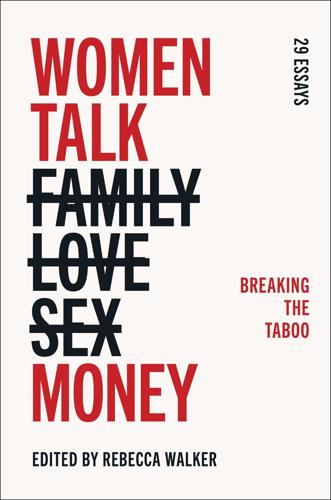
Women Talk Money: Breaking the Taboo
by
Rebecca Walker
Published 15 Mar 2022
This has looked like bringing the #MeToo movement to fashion, supporting model-leaders in Los Angeles, the Bahamas, Polynesia, Sudan, Rwanda, Iceland, and beyond as they call for our industry to lead on the climate crisis, to raise rapid response funds and visibility for frontline movements, to build solidarity across the supply chain, and find kinship with those working in retail, export processing zones, and garment factories. * * * At times, modeling felt to me like acting the role of the accommodating mindless mannequin, except more humiliating, because there was no script. I delivered lines I did not believe but I wrote. I played a character that made me uncomfortable, and yet I chose how to perform.
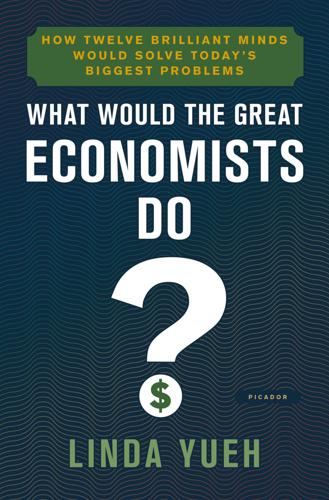
What Would the Great Economists Do?: How Twelve Brilliant Minds Would Solve Today's Biggest Problems
by
Linda Yueh
Published 4 Jun 2018
Foreign direct investment that established Chinese–foreign joint ventures and other foreign-invested enterprises were explicitly geared towards exports and prevented from selling into the domestic market, which protected Chinese industries from foreign competition. They were initially located in Special Economic Zones, which were created as export-processing zones similar to its East Asian neighbours. China thus became integrated with East Asia, as it joined regional and global production chains, and eventually became the world’s largest trader. Undoubtedly, foreign investment and export-orientation benefited its economic growth, but China’s policies defy easy categorization as they have always been uniquely tailored to the country’s circumstances.
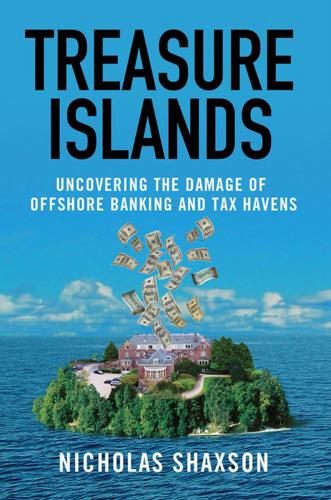
Treasure Islands: Uncovering the Damage of Offshore Banking and Tax Havens
by
Nicholas Shaxson
Published 11 Apr 2011
Britain had briefly tried this gimmick under Prime Minister Margaret Thatcher until it became clear they did not work: set up a ten-year tax holiday, and companies will pack up and leave after nine years and 11 months, or will transfer the business to another subsidiary and get another ten-year holiday. After these failures, however, Africa was still encouraged to embrace them: In 1990 only one sub-Saharan African country offered tax holidays, but a decade later they all did. Often these holidays are available in special export processing zones, which are a bit like small offshore jurisdictions lodged inside the state. When these zones pop up, wealthy locals who want to invest at home inevitably send their money overseas, dress it up in an offshore secrecy structure, then return it, slashing their tax bill in the process. 17.Daniel J.
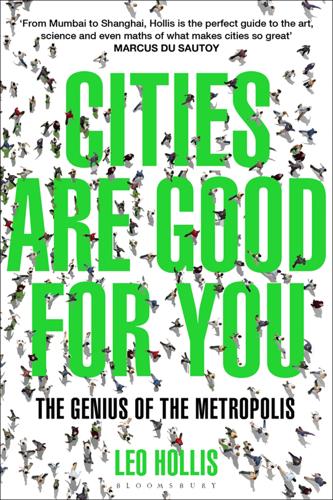
Cities Are Good for You: The Genius of the Metropolis
by
Leo Hollis
Published 31 Mar 2013
It was in the Pudong District, in the former rice fields to the east of the Huangpu river, that the authorities first dreamed of a modern city in the 1980s; it was even renamed ‘the head of the dragon’ by President Deng Xiaoping himself. From this discarded agricultural land a new city was to be born, divided into the Jinqiao Export Processing Zone, the Waigaoqiao Free Trade Zone and, most important of all, the Lujiazui Financial and Trade District as well as a deep-water port leading to the Yangzte river to take the goods manufactured in the factories of the city to the rest of the world. Of these districts, Lujiazui would be the centrepiece of the metropolis, a ‘golden zone’ dedicated to capital.
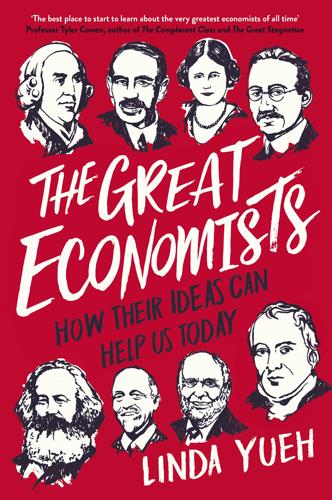
The Great Economists: How Their Ideas Can Help Us Today
by
Linda Yueh
Published 15 Mar 2018
Foreign direct investment that established Chinese–foreign joint ventures and other foreign-invested enterprises were explicitly geared towards exports and prevented from selling into the domestic market, which protected Chinese industries from foreign competition. They were initially located in Special Economic Zones, which were created as export-processing zones similar to its East Asian neighbours. China thus became integrated with East Asia, as it joined regional and global production chains, and eventually became the world’s largest trader. Undoubtedly, foreign investment and export-orientation benefited its economic growth, but China’s policies defy easy categorization as they have always been uniquely tailored to the country’s circumstances.

Confessions of an Eco-Sinner: Tracking Down the Sources of My Stuff
by
Fred Pearce
Published 30 Sep 2009
Tesco and Siemens, BOC Gas and Knorr, Pfizer and Sony, Epson and Sanyo, Alcan and Bosch and Wal-Mart. If China escapes from the low-wage sweatshop origins of its industrial revolution to become a fully fledged consumer society, then this is how it will happen. Keep going on the expressway east of Suzhou Industrial Park and you get to the Kunshan export-processing zone. Here another Taiwanese ODM, Compal, makes almost a tenth of all the world’s laptop computers. It produces for Dell, IBM, Hewlett-Packard, Acer and many other brands. My trusty Toshiba, companion on many a trip, came from here. ‘Logitech sell them webcam modules,’ said Sammy as we headed in to meet another old mate, Compal vice-president Mage Chang.
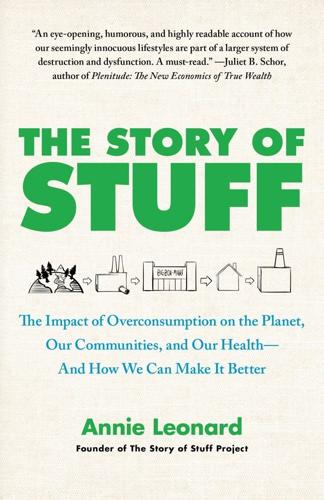
The Story of Stuff: The Impact of Overconsumption on the Planet, Our Communities, and Our Health-And How We Can Make It Better
by
Annie Leonard
Published 22 Feb 2011
This is the stage we’ve heard the most about, on account of all the bad press that sweatshops have received. Sadly, despite the attention, the conditions for most garment workers are still horrendous. Many big brand clothing companies tend to seek out factories that pay the absolute lowest wages. Today this means places like Bangladesh and the “special economic zones” or “export processing zones” of China, where workers—squeezed into underlit, underventilated, deafening factories to perform mind-numbing, repetitive drudgery, sometimes for eleven hours a day—receive wages as low as ten to thirteen cents per hour.27 Free speech and the right to form a trade union are routinely repressed as well.

Jihad vs. McWorld: Terrorism's Challenge to Democracy
by
Benjamin Barber
Published 20 Apr 2010
In the same spirit, the cinema industry makes war on American film imports while it bestows upon Sylvester Stallone one of France’s highest honors, the Chevalier des arts et lettres.32 Ambivalence also stalks India. Just outside of Bombay, cheek by jowl with villages still immersed in poverty and notorious for the informal execution of unwanted female babies or, even, wives, can be found a new town known as SCEEPZ—the Santa Cruz Electronic Export Processing Zone—where Hindi-, Tamil-, and Mahratti-speaking computer programmers write software for Swissair, AT&T, and other labor-cost-conscious multinationals. India is thus at once a major exemplar of ancient ethnic and religious tensions and “an emerging power in the international software industry.”33 To go to work at SCEEPZ, says an employee, is “like crossing an international border.”

Super Continent: The Logic of Eurasian Integration
by
Kent E. Calder
Published 28 Apr 2019
In Guangxi province next to Vietnam, for example, total import-export value from processing trade grew at an average annual rate of 33 percent from 2010 to 2016.33 Such trade, in sectors like electronics, food processing, and pharmaceuticals, was typically conducted through taxadvantaged industrial zones close to the sea or the Vietnamese border, often relying on low-cost guest workers.34 These China-centric export-processing zones also cut costs by subcontracting low-end processes to Cambodia while retaining mid- to high-end functions, including skills training, within China. China and Malaysia are also working to systematically coordinate valuechain development, through their “two countries, twin parks” initiative.
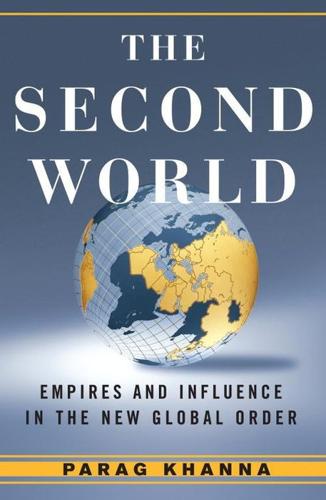
Second World: Empires and Influence in the New Global Order
by
Parag Khanna
Published 4 Mar 2008
Land reclamation on both Hong Kong island and mainland Kowloon have narrowed the grand Victoria Harbor between them—a symbol for the closing gap between Hong Kong and the upper Pearl River delta cities of Shenzhen and Guangzhou (Canton), which together form the wealthiest Chinese region.45 The delta was Britain’s entrepôt on the maritime Silk Road, and now it is the channel on which ancient Yueh cities have reclaimed modern glory as export-processing zones. In nearby Macao (China’s own Las Vegas) and Hainan Island, Chinese mega-infrastructure projects are paving the way for Taiwanese, Korean, and Hong Kong investors to build hugely profitable hotels and resorts; buy up real estate; and launch low-cost airlines to ferry Chinese there from all over the mainland, while Beihai offers an ideal location for the coastal trade with Vietnam.

The Finance Curse: How Global Finance Is Making Us All Poorer
by
Nicholas Shaxson
Published 10 Oct 2018
The main sources for this are Matt Kennard and Claire Provost, ‘Story of cities #25: Shannon – a tiny Irish town inspires China’s economic boom’, Guardian, 19 April 2016; Paul Quigley, ‘Why do Chinese leaders love visiting Shannon?’, Journal, 23 February 2012; and ‘70 years a-glowing as Shannon Airport celebrates milestone with launch of photographic exhibition’, Shannon Airport News, 2 December 2015. With thanks to Mic Moroney for the Shannon tip-off. For O’Regan, also see Patrick Neveling, ‘Export Processing Zones and Class Formation’, in James Carrier and Don Kalb, eds, Anthropologies of Class: Power, Practice & Inequality, Cambridge University Press, March 2015. 3. Initially, Export Profits Tax Relief gave a 50 per cent reduction on taxes on income from export sales, but this rose to 100 per cent in 1960.
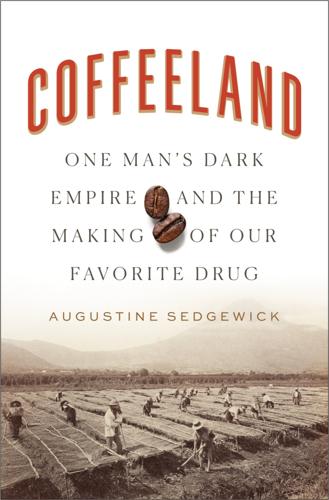
Coffeeland: One Man's Dark Empire and the Making of Our Favorite Drug
by
Augustine Sedgewick
Published 6 Apr 2020
El Salvador was relatively late to coffee. By the 1880s Brazil already controlled more than half the world market, and coffee was also well established in European colonial possessions in South and Southeast Asia. In addition, the Berlin Conference of 1884–1885 divided up Africa into European export-processing zones that promised more colonial coffee production. Moreover, the nearby republics of Guatemala, Nicaragua, and Colombia had also gone in strongly for coffee during the Latin American export boom, joining established planters and exporters in countries including Costa Rica and Mexico. But then, just around the time of James Hill’s arrival in Central America, two events disrupted business in the world’s greatest coffee-producing regions, and heightened the opportunity in El Salvador.

The World's Banker: A Story of Failed States, Financial Crises, and the Wealth and Poverty of Nations
by
Sebastian Mallaby
Published 24 Apr 2006
In a Foreign Affairs article published in 1997, Steven Radelet and Jeffrey Sachs of the Harvard Institute for International Development agreed that a lot of things have to go right simultaneously for development to take off; but they suggested it might be a mistake to try to achieve this on a national level. Rather than address that impossibly vast challenge, Radelet and Sachs argued, it would be better to follow Asia’s strategy of creating enclaves of efficiency. Most of the East Asian Tigers created export-processing zones in which corruption and red tape were eliminated, security was reliable, and electricity and transport links were excellent. These enclaves attracted investment, and prosperity radiated gradually outward. China, for example, set up several special economic zones along its coastline, starting in 1980.

The Rise of the Network Society
by
Manuel Castells
Published 31 Aug 1996
However, it is doubtful that these small enterprises would have been able to compete on the world market without critical, strategic support from the state. Such support took three main forms: (a) subsidized health and education, public infrastructure, and income redistribution, on the basis of a radical agrarian reform; (b) attraction of foreign capital, via tax incentives, and the establishment of the first export-processing zones in the world, thus ensuring linkages, subcontracting and enhancement of quality standards for Taiwanese firms and workers that came into contact with foreign companies; (c) decisive government support for R&D, technology transfer, and diffusion. This latter point was particularly critical to enable Taiwanese firms to climb up the ladder of the technological division of labor.
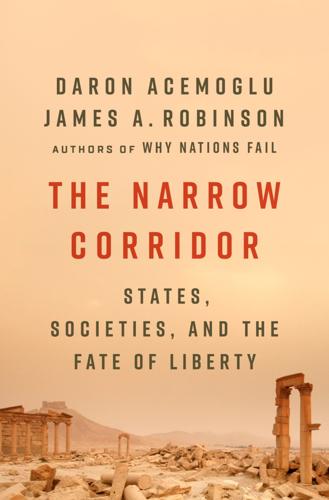
The Narrow Corridor: States, Societies, and the Fate of Liberty
by
Daron Acemoglu
and
James A. Robinson
Published 23 Sep 2019
Before then it had maintained the fiction that all nonstate production was by “households.” As the Communist Party withdrew from trying to control every aspect of the economy, there was a huge upsurge of entrepreneurship (much of this control had already collapsed during the Cultural Revolution, making some of the later loosening inevitable). In 1990 Wenzhou started its own export processing zone and built its own airport. The real initiative in Wenzhou came from society, not the state. Nevertheless, the top-down element subsequently came to define the direction of the Chinese economy. Deng’s vision was one in which political power would remain in the hands of the Communist Party, which was supposed to be ruled in a more moral manner than under Mao.
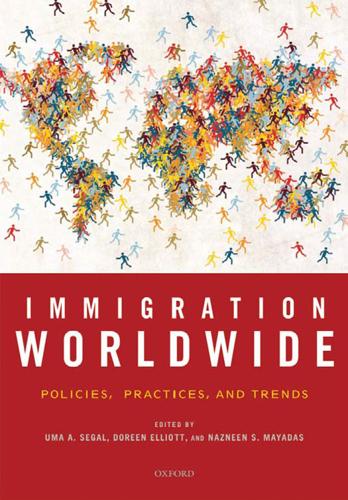
Immigration worldwide: policies, practices, and trends
by
Uma Anand Segal
,
Doreen Elliott
and
Nazneen S. Mayadas
Published 19 Jan 2010
This reveals the dominant position of Lagos State as an absorbing center of aliens. Other known states of the federation, almost in descending order, are Rivers and Delta states (the oil producing states), and Ogun and Kano states, to mention but a few. Other pockets of aliens’ concentration are the nation’s major ports, for example Lagos, Warri, Port Harcourt, and the Export Processing Zone of Calabar, where aliens are known as shoppers. Entry Requirements as Explanatory Factor The enactments of immigration laws and indigenization exercises have been not only the main instruments for promoting and defending national interests, but also a determinant of immigration flows. Such laws include the Immigration Act, 1969; the Immigration (Amendment) Decree No. 8, 1972; and the Immigration Act, 1990 (Federal Government of Nigeria, 1990).